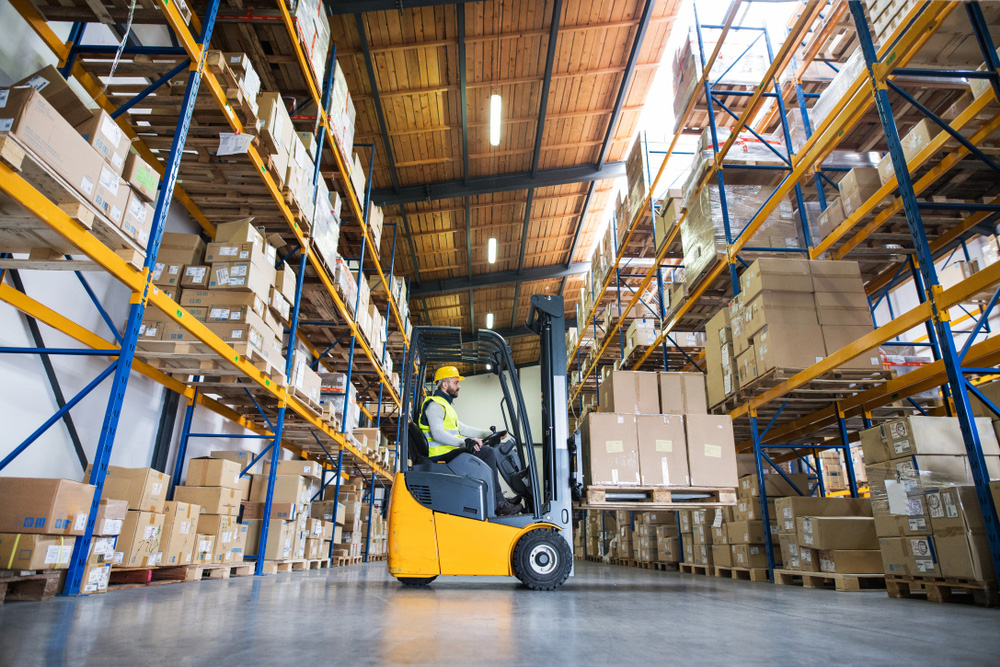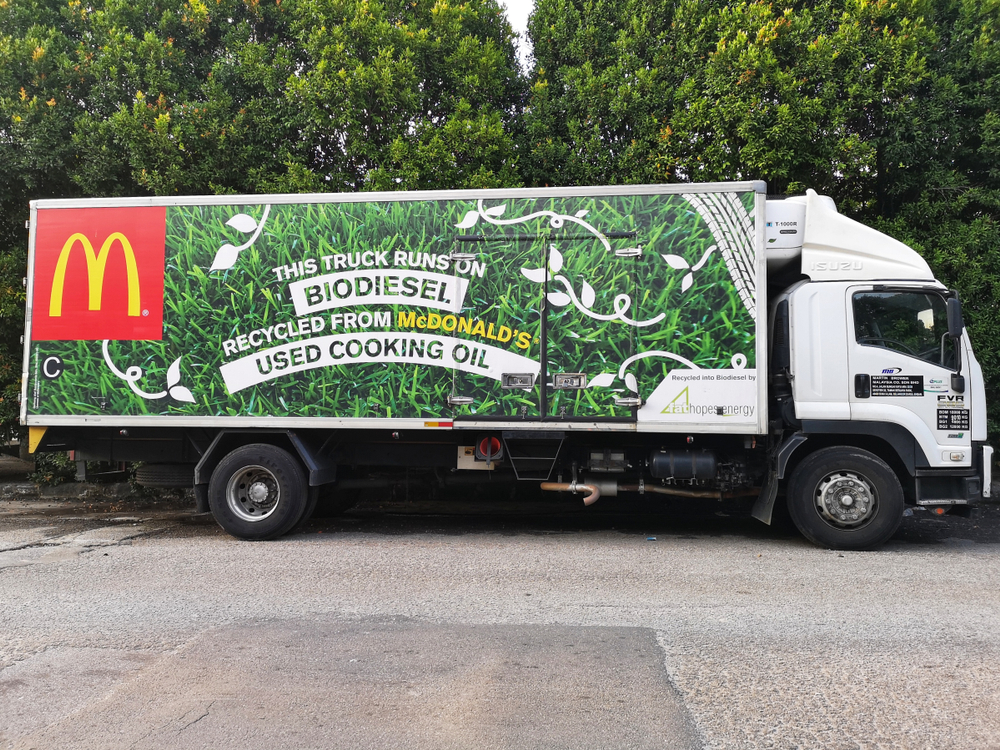ARTICLE UPDATED ON SEPTEMBER 29, 2023
The 4-Way vs. The 2-Way Pallet: How to Choose a Pallet Type
When comparing the 4-way pallet to the 2-way pallet, it becomes evident that their main distinction lies in the forklift entry capability. The 2-way pallet can only be accessed by a forklift from two sides, whereas the 4-way pallet allows forklift access from all four sides.
This dissimilarity in design has implications for the usage of each pallet type, including how and sometimes where they are employed. In situations where space is limited, opting for a 4-way pallet may be more advantageous, as it simplifies the transportation process using a forklift. On the other hand, if cost is a greater concern and pallet movement is expected to be minimal, a 2-way pallet could serve as a viable alternative.
Before establishing a fleet of pallets, it is crucial to carefully consider the disparities in cost, durability, and capacity between these fundamental pallet types.
Choosing a 4-Way vs. a 2-Way Pallet: Pros and Cons
The most apparent benefit of a 4-way pallet is that a forklift operator can lift it from any side. However, because of its design, the 4-way pallet has other advantages that distinguish it from a 2-way pallet as well. It’s important to note that there are two different types of 4-way pallets: partial 4-way pallets have notched stringers on one side that allow them to be picked up from any side by most forklifts, but from only two sides by a pallet jack. A true 4-way pallet (almost always a block pallet) can be picked up by either a forklift or pallet jack from any side.
4-Way Block Pallets
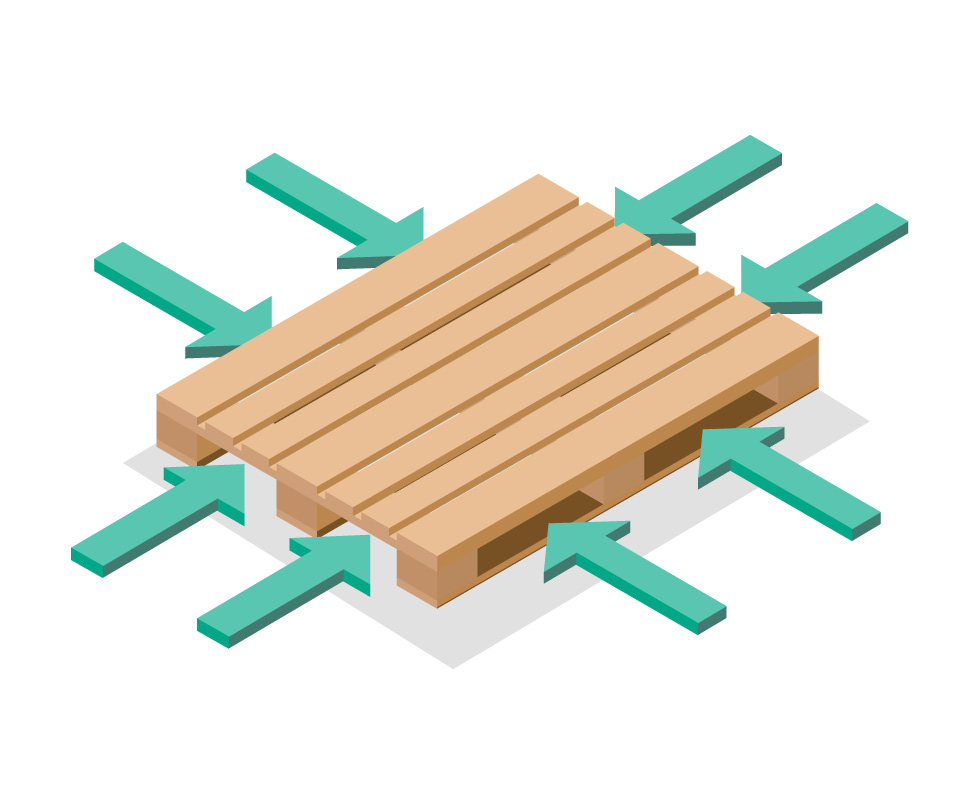
| Pros | Cons |
| Highest durability:Of the three types of pallets, block pallets are the most durable due to their design and the high-quality wood generally used.
Highest weight capacity: The 4-way block pallet has a static capacity of 2,800 pounds, higher than its 2-way or partial 4-way counterparts. Improved operational efficiency: 4-way block pallets combine higher durability and strength with the convenience and other advantages of true 4-way entry. | Expensive: Block pallets are often the most expensive as they require more wood and their design is more complex.
Heavy: A 4-way block pallet can weigh anywhere from 65 to 80 pounds. This increases the weight of a truckload of pallets, driving up transportation costs. Wasteful: 4-way block pallets are often made from hardwood trees. These trees take decades to grow, so it’s not possible to replace them at the same rate that they’re being cut down. |
Partial 4-Way Pallets
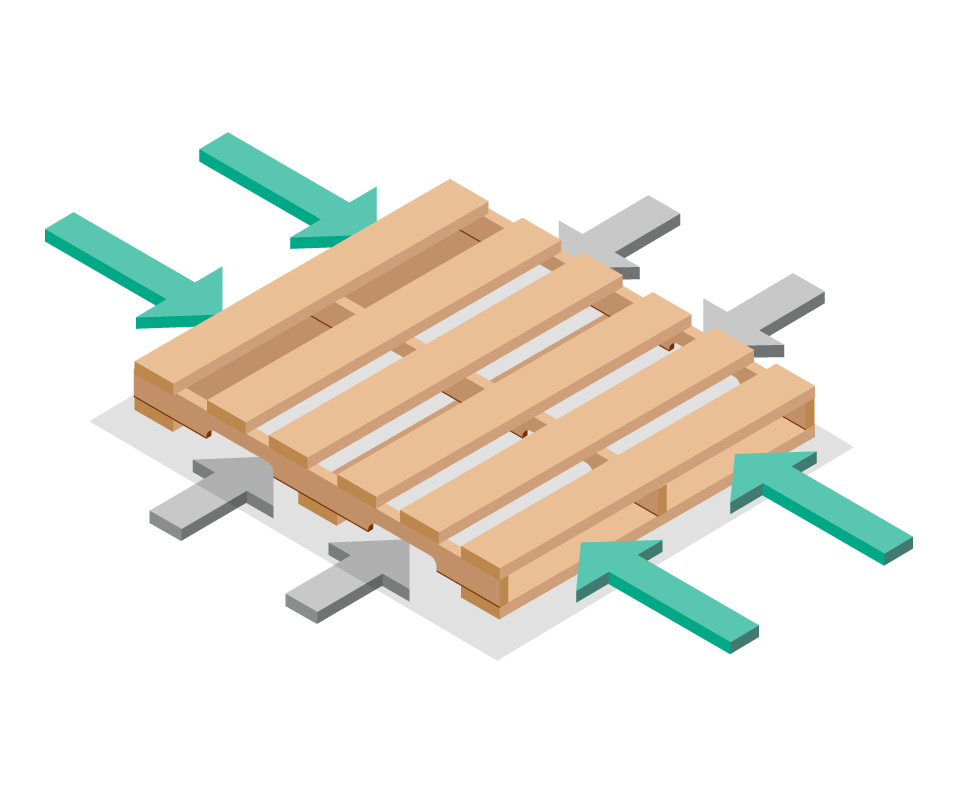
| Pros | Cons |
| Uses space effectively: As forklift entry can occur from any side with a 4-way pallet, they don’t require special storage orientation to allow forklift operators to lift them.
More pallets per truckload: The flexibility of a 4-way pallet also extends to the back of the semi-truck, where more pallets can be stored since they don’t require special orientation for unloading. Enhanced supply chain speed: Forklift operators can quickly move 4-way pallets without worrying about maneuvering to approach them from a specific angle, speeding up that loading and unloading times and reducing labor costs. | Lower durability: The notches in a pallet’s stringers allow forklift operators to enter them from every side, but also weakens the pallet and increases the likelihood of damage.
Lower weight capacity: Again, due to their notched stringers, partial 4-way pallets can’t carry as much weight as their two-way or block pallet counterparts. Higher cost: Because of the additional effort involved in adding notches, a partial 4-way stringer pallet will cost more than a 2-way pallet (though still not as much as a block pallet). |
2-Way Pallets
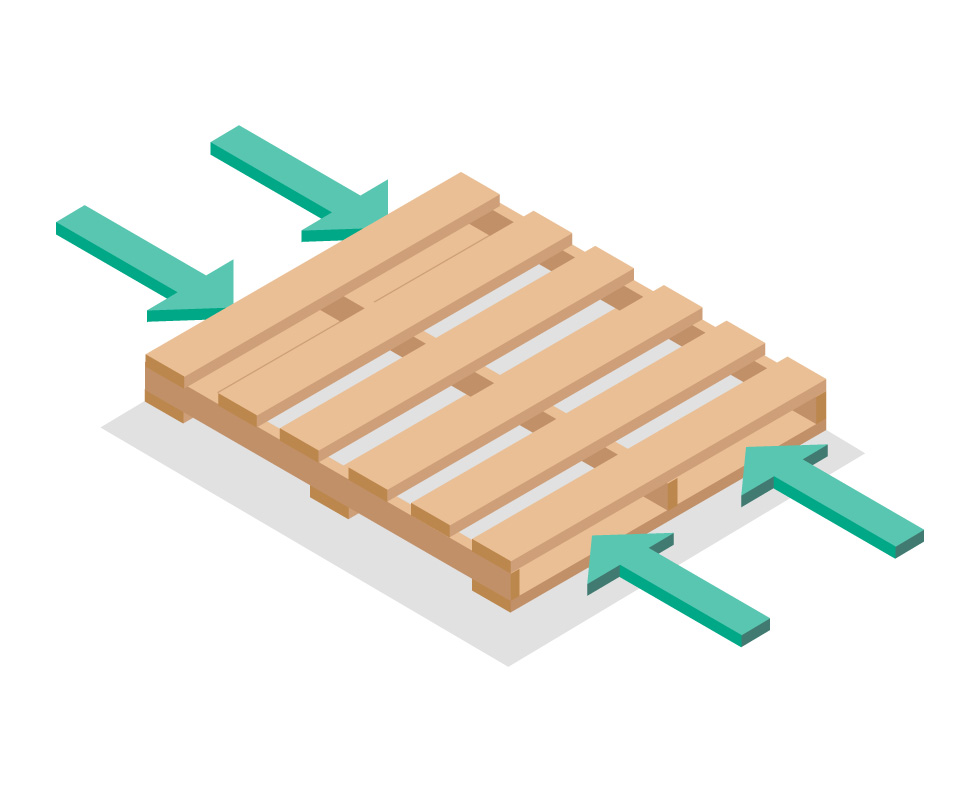
| Pros | Cons |
| Enhanced durability: The stringers in a 2-way pallet are solid from end to end, meaning that they are stronger and less prone to breakage than pallets whose stringers have been notched.
Mid-level weight capacity: A 2-way pallet can typically carry more weight than a 4-way stringer pallet.Lower cost: As the design of a 2-way pallet is simpler than that of a true or partial 4-way pallet, they’re easier to manufacture and the cost is lower at purchase. | Poor warehouse space utilization: 2-way pallets require a storage arrangement that takes into consideration the fact that they can only be entered from either the front or back.
Reduced loads: These pallets must be placed in the truck in such a way that they are accessible to a forklift or pallet jack. This limits the way the load can be arranged, which causes each truck to carry fewer pallets of goods in one load. Reduced supply chain efficiency: Individuals moving 2-way pallets must spend more time maneuvering around them to lift them properly, which wastes time and ultimately increases labor costs. |
Comparing 4-way vs. 2-way pallets makes it clear that each of these types of pallets has its benefits and disadvantages. Choosing one type over the other is a matter of prioritizing which pallet characteristic is most important for a company or industry. However, the choice doesn’t have to be between a typical wood block pallet and a stringer pallet. There are alternative materials, such as plastic, that are being used to create pallets that have all the advantages of both 4-way and 2-way pallets – with very few of the drawbacks.
How Plastic Pallets Eliminate the Downsides of 4-Way Platforms
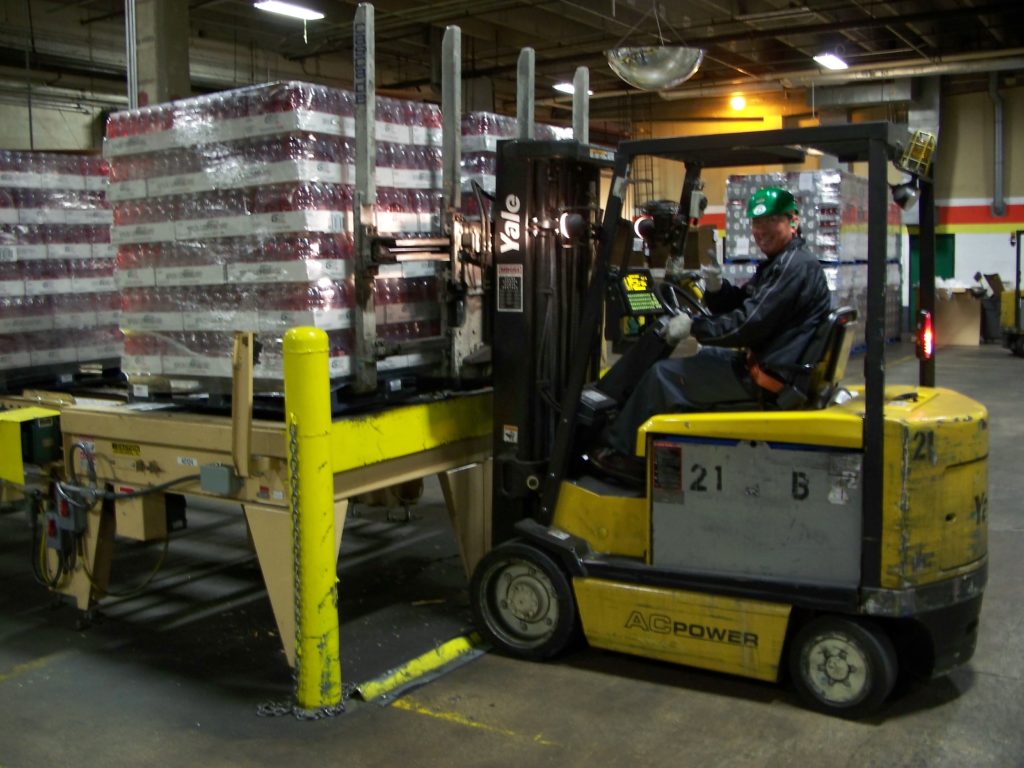
If it weren’t for the limitations of 4-way block pallets, most businesses would opt to use them. They allow for greater flexibility, efficiency, and storage capacity. And they last longer than 2-way pallets and are less likely to be rejected by retailers due to their condition. However, they have plenty of drawbacks as well, such as their heavy weight, high expense, and decreased environmental sustainability. Plastic 4-way pallets are designed to provide warehouse and logistics managers with the benefits of a wood block pallet while addressing the downsides.
Since plastic pallets can be shaped into whatever form is most useful, most plastic pallets are designed for true 4-way entry. Plastic pallets don’t use fasteners, which makes them less likely to fail or fall apart than a 2-way or 4-way wood pallet. Their unibody construction and resilient plastic material also allow plastic pallets to carry more weight — as much as 5,000 pounds of dynamic weight with an evenly distributed load. The pallets themselves are up to 35% lighter than their wood counterparts, which means that more inventory can be carried in each truckload while burning less fuel.
When comparing the 4-way vs the 2-way pallet, it’s easy to see that 4-way pallets are superior: they are simply more efficient and more versatile. However, plastic pallets provide the same efficiency and versatility while minimizing the drawbacks of a wood 4-way pallet. Lighter, stronger, more resilient plastic pallets help manufacturers reduce their Total Cost of Business (TCOB) by enhancing efficiency in the supply chain and conserving space on the warehouse floor while, at the same time, providing a slew of benefits that wood pallets can’t match.
Companies looking to enhance the efficiency of their pallets use iGPS plastic pallets for all their shipping needs. Our lightweight, recyclable plastic pallets incorporate RFID technology, making them traceable throughout a supply chain. For more information, contact us at 1-800-884-0225, email a specialist at [email protected], or visit our contact page
